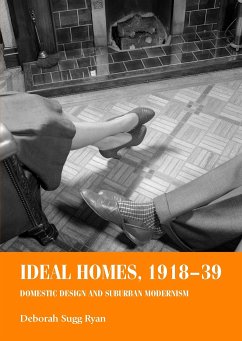Ideal homes, 1918-39 explores the aspirations and tastes of new suburban communities in interwar England. In a period when homeownership became the norm, these communities resisted official notions of good taste, seeking out forms of domestic architecture and design that were both modern and nostalgic. Stressing suburbanites' agency as consumers, the book challenges the dominance of Modernist values on writing on design, architecture and consumption, exploring popular conceptions of the 'modern' within their social and historical contexts. Drawing on exhibitions, novels, memoirs, advertisements, magazines and films as well as actual examples of suburban architecture and interiors, the book investigates the ways in which new suburban class and gender identities were forged through the creation of the home. It explores the material forms that embodied longings for 'Old England' and the British Empire, and reveals how modernity crept into the home through the back door - via the kitchen, where women embraced new labour-saving technologies. Ultimately, the book argues that a specifically suburban modernism emerged - one that looked backwards to the past and forwards to the future - embodied by the Tudorbethan semi. It shows that the inter-war 'ideal' home was both a retreat from the outside world and a site of change and experimentation. Finally, it considers how such houses are lived in today. Ideal homes, 1918-39 will appeal to academics and students in design, social and cultural history as well as a wider readership curious about interwar homes.

